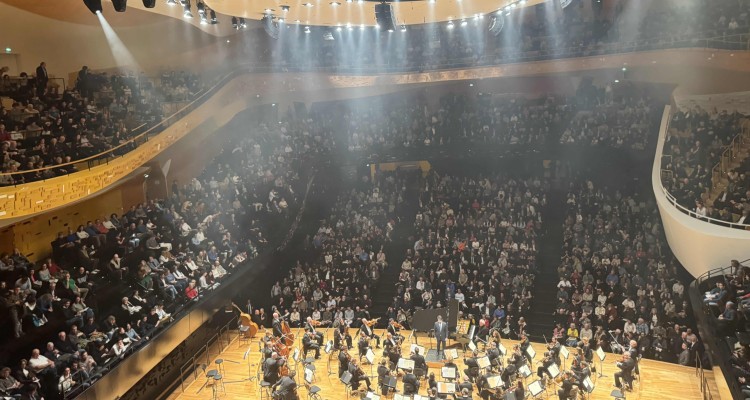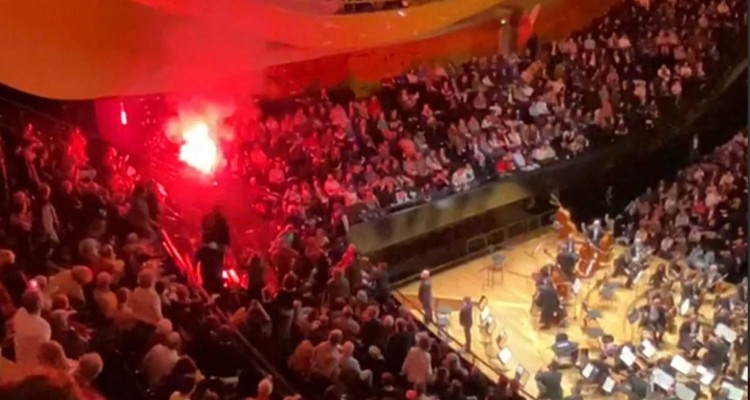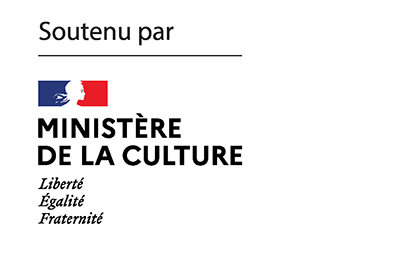We know the Christmas movie genre and its more or less serious sub-genres invented by Hollywood. Danny Trom, after having seen Gremlins (1984), the horror film directed by Joe Dante and produced by Steven Spielberg, analyzes what could be a specific sub-genre to be identified, the Jewish Christmas movie…

With Duel (1971), Steven Spielberg’s film career began under the sign of anguish. Barely a story, Duel propels us behind the wheel of an Average Joe pursued with murderous tenacity by a huge truck whose driver is faceless. Seen from today, with what we know of Spielberg, the motif of Duel, at first opaque like 1970s mirrored sunglasses, becomes transparent. Duel is a film about anonymous persecution, at a time when the word Holocaust did not exist. Anxious, Spielberg never stops looking in the rearview mirror, like David Mann, his character hunted by the big machine. When he thinks he has lost it, the truck reappears. He wants to call for help but the phone booth at the gas station is destroyed by the truck. Until the end, he is, like us, anxiously riveted to his rearview mirror.
One rainy Sunday afternoon, while browsing through a list of children’s movies, I decide to watch Gremlins (1984) with my 9 year old daughter, not thinking about Duel. Isn’t this a film that came out, more than ten years later, from the collaboration between Spielberg – whom I spontaneously associate with E.T. – and Joe Dante, the director of Piranhas? Gremlins is an easy-to-love family fantasy comedy, spiced with a dose of sophisticated Dante-style horror suitable for a young audience, balance leaning distinctly, as I recall, on the syrupy side of Spielberg. Yes, certainly, Gremlins leans, but decidedly not in the direction I thought.
The Christmas movie and its sub-genres
It turns out that Gremlins is first and foremost – and I had forgotten this – part of a cinematographic genre called Christmas movies, those uplifting family films with monotonous scripts where Christmas is a pretext to praise the cardinal values of American society, honoring the family – a couple with one or two children and a dog in a house with a backyard and a barbecue in the corner -, exalting the peaceful life of the middle class in the suburbs and the values of honest work, probity and charity associated with it, all wrapped up in the gratitude of living in a country blessed by God. In fact, with Home Alone (1990), Chris Columbus, the screenwriter of Gremlins who worked under the tutelage of Spielberg, would soon make a humorous copy that was a huge success.
Carefree, I sit my daughter down for a Christmas movie, of which there are also many romantic versions where the holiday signals the end of solitude. This is also the case in Gremlins, since Billy, the teenage hero of the film, receives a Mogwai from his father as a Christmas present, a little beast named Gizmo. He vaguely covets the young orphan Kate, who obviously also likes him. We can guess that this Christmas will bring Billy and Kate together.
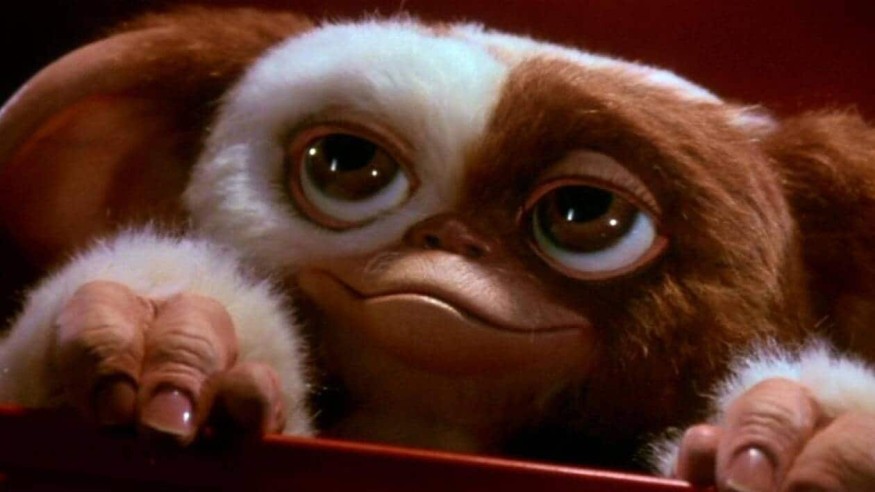
Gremlins is also similar to the critical Christmas movie, which transforms Christmas into an opportunity for improbable redemption in a corrupt world, a variant Frank Capta immortalized with It’s A Wonderful Life (1946). In this nobler sub-genre, Christmas is that cathartic moment when injustices take on a vivid, acute color—and can ultimately be resolved. Although at first glance the small town preparing to celebrate Christmas in Gremlins offers all the guarantees of conformity with a quiet and happy America, there is nothing idyllic about it. We see this in the scene in which a middle-aged middle-class woman, stilted, surly and merciless, calls a pretty young mother with two hungry children a parasite, after the tenant implores her to lighten her rent. I perceive a surprise in the eyes of my daughter, who is rather well-disposed toward the human race, in front of this nonchalant social brutality that takes her unawares.
What I had not anticipated, however, is that Gremlins is fully in line with the myriad of “Christmas horror movies,” as juvenile as they are conventional, with which American cinema has graced us; in this genre, Santa Claus, as a gift, sows undifferentiated terror in a random town. Silent Night, Deadly Night, released in theaters the same year as Gremlins, tells the story of a child who witnesses the massacre of his parents by a Santa Claus; a trauma that will transform the orphan, mistreated by the Mother Superior of the institution where he is placed, into a cruel teenage serial killer disguised as Santa Claus. The Christmas horror movie, like the general category of which it is a variant, also honors egalitarianism in the respect of all differences, including income. The egalitarianism culminates at Christmas, but in horror, by the equal distribution of death.
This is a lesson that doesn’t seem to fit my daughter very well and suddenly I have doubts. I realize afterward that the young lunatic in Silent Night, Deadly Night is named Billy, like the teenage hero who receives Gizmo as a present in Gremlins. And, indeed, the Gremlins Christmas party turns sour. The little devilish beasts sow desolation and death, before they can be stopped. A critical and romantic Christmas movie at the same time, Gremlins frankly, to my surprise, falls into the category of Christmas horror movies.
The evil of Christmas
Seen from this angle, Gremlins is nevertheless quite different. No unloved psychopath who mechanically reproduces the evil he suffered in his childhood, nor any asocial being, evil by nature, that American society hides from time to time, takes on the guise of Santa Claus here. Billy’s father, a failed inventor, is unintentionally comical, a pathetic loser, who both delights and exasperates his wife, an impeccable housewife. The father acquires the Mogwai in an obscure store in Chinatown that resembles 1920s Shanghai. The Christmas present is of dubious origin and yet given by the father.
In Gremlins, the Christmas present, this small furry animal as unique and innocent as the Easter lamb, is multiplied into as many evil replicas by the negligence of its new master who is nevertheless informed of the Mogwai’s instructions. What is striking, then, is how much Gremlins’ Christmas is less the framework of a deviant narrative than the subject of a special treatment as an event. It is not a particular Christmas that degenerates here, it is Christmas itself that virtually mutates. The nice Gizmo remains the same, unchanging throughout the film, unperturbed like a Platonic idea, but empirically, in reality, on earth, he suddenly turns into his opposite.
Gremlins then ostensibly invites the spectator to consider Christmas from the outside, in the manner of a impotent radiologist observing the multiplication of metastases in a body eaten away by evil. Those who prepare for the holiday, by acquiring Christmas trees carefully placed near the fireplace, those who zealously devote themselves to this ritual that counts more than any other, are obviously naïve, simpletons, almost morons, and even sometimes xenophobic, such as the character who constantly complains about the poor quality of cars and other foreign products. The people who celebrate Christmas in Gremlins obviously do not benefit from the tenderness of the directors. Christmas and its cinematographic celebration, the idea of Christmas and its tendentially infinite actualizations, are immediately put at a distance.
This distance is marked by a conversation between Billy and Kate that sets the status of Christmas in Gremlins. The young Kate tells Billy – the serious and hard-working boy, now the owner of Gizmo – that one Christmas day, her father, loaded down with presents, broke his neck when he fell down the chimney. This is the second time I’ve sneaked a peek at my daughter, wondering if Gremlins was a good choice. The evocation of the father who succumbs, burdened with gifts, by falling into the fireplace, arouses in me an irrepressible laughter, a laughter disapproved of by my daughter whose expectations, probably already ruined, remain stubbornly fixed on the family Christmas movie. On the day of the Nativity, Kate’s father dies while Billy is now pampering his father’s cute, deadly gift, observations I spare my daughter.
The little music of Christmas, the music of the bells, becomes metallic and continuously signals the threat that lurks for those accustomed to horror movies. Glancing obliquely at my daughter, who has now sought the support of her teddy bear to face the rest of the film, which she guesses will be harsh, my anxiety mounts. Because Gremlins is a movie about evil. Is evil, evil as such, a subject for children? This is a question that torments every parent, but it is too late to ask, we are caught up in it, the deliberation will have to wait.
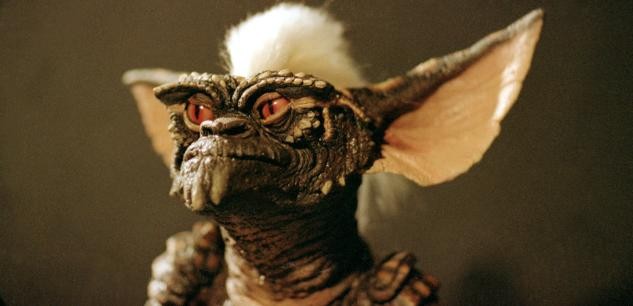
In the meantime, evil is invariably present in Gremlins. Not by the murderous hijacking of the party, in the way a serial killer slips into Santa’s outfit. It is Kate who announces it: Christmas is a time of depression and suicide. It is Christmas that mutates. Or rather: it is still Christmas. Now you’ll have to watch Gremlins all the way through, knowing that it’s a movie about Christmas evil.
When Christmas turns upside down
Dante’s Christmas is a farce, but Spielberg’s is a carnival. Joe Dante has injected the thrill, it is his trademark. But a farce is always random. Spielberg considers Christmas in its ambivalence. Christmas is approached in its structure. Seen from the outside, Christmas, the day of the birth of the Savior who comes into the world under the banal appearance of a cute infant, less hairy than Gizmo but as endearing as him, is a day of death and destruction. But then, one wonders, from what position of exteriority is Christmas approached in Gremlins? Here, we are condemned to speculate.
While the solitary killer of the standard Christmas horror movie is all the more dangerous because he is hidden, disguised as a distributor of benefits to better dispense death, the Gremlins are numerous, noisy, exhibitionist. They multiply at the slightest contact of the innocent Gizmo with water. A few drops are enough. They multiply not in the way that Jesus multiplies the loaves, but like an inverted baptism which, instead of purifying, unleashes an uncontrollable violence.
The old Chinese man, with his braid and traditional dress, straight out of ancient China, who is reluctant to sell his Mogwai to Billy’s father, knows in advance that this adorable and unique being is passing into the wrong hands, that all his adoring fans will end up regretting that he has appeared in their world. Gizmo babbles on, like a Jesus whose words we don’t catch; only Billy, who has adopted him, seems to be able to make out what he means at times. But Billy is careless, as teenagers are; in his defense, his father has paid only casual attention to the old Chinese man’s meticulous recommendations for treating Mogwai. Gizmo inadvertently gets wet.
Then, the Gremlins proliferate at a dizzying speed. They now form a furious horde that overwhelms the peaceful but not so innocent inhabitants of the town. I laugh ostentatiously to let my daughter know that this is funny, but to no avail. The ugly devils with sharp teeth and pointy ears invade the town bar, get drunk, cavort, quarrel, have a great time. In their fury, they ransack everything in their path and kill. Multiplying, ultra-violent, drunk, hilarious and rude, they sing, slamming, screaming, laughing while destroying. Their gratuitous nastiness is contagious, like that of a crowd of drunken looters, of unleashed hooligans. Yes, this is how they celebrate Nativity. Merry Christmas. Didn’t Kate warn us that Christmas is morbid?
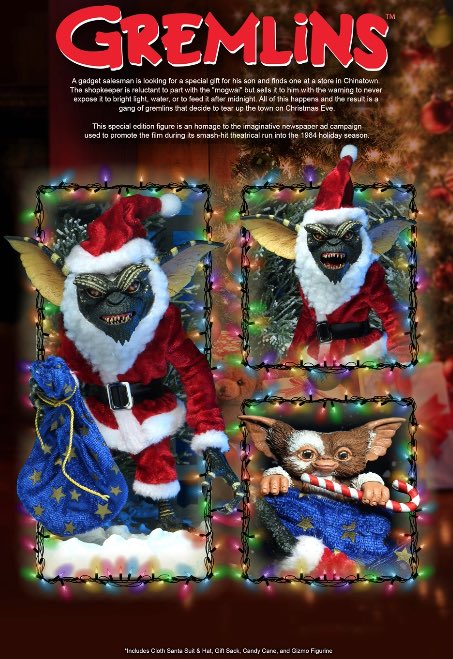
How to overcome this calamity, asks the distraught viewer, especially my daughter whose teddy bear now hides her face. A panicked viewer withdraws in anticipation that things will get better. But we are both realists: my daughter has never thought that Santa Claus really exists and she knows as well as I do that it is unreasonable to count on a miracle. Hence the question: what do the police do?
Billy rushes to the police station, but the sheriff and his deputy, at first incredulous, turn out to be fairly stupid, drunk and cowardly, fleeing the looting scenes as soon as they arrive. But then, one wonders, are we really in America? Yes, but in a deep, rural, pious and conformist America to the point of caricature. The town is like a metaphor for all deep hinterlands, where Christmas virtually goes wrong. In Gremlins, this takes on a democratic form: Christmas does not turn against others, but against itself, against those who celebrate it. Christmas turns against everyone. It turns, dare we say it, into a self-pogrom.
A Jewish Christmas movie?
Once the movie was over, the Gremlins eradicated, the tension eased, and my daughter reassured, Duel came back to my mind. The persecutor of Duel is anonymous, represented by a truck with no identifiable driver. The Gremlins are also persecutors. But where did the screenwriter get these monsters, potentially good as Gizmo attests, but capable of multiplying to form a murderous mob? In the slang of British fighter pilots fighting Nazi Germany, Wikipedia informs me, Gremlins are malicious goblins that cause those mechanical breakdowns so dreaded by aviators. As anonymous as the persecutor is in Duel, he is less so than the slang Gremlin of the Royal Air Force pilots, who is only the image of the mechanical breakdown, involuntary, a personalization of paralysis in front of evil, whereas the truck in Duel is moved by a murderous intention.
With his children’s novel The Gremlins, published in 1943, the very popular British writer Roald Dahl brought the Gremlins to life with a purpose. In this story, promised to be made into a cartoon by Walt Disney, which was never made, but from which Disney drew comic books, the Gremlins, forest creatures, oppose the Royal Air Force, which is setting up a factory to build airplanes on their natural habitat. The Gremlins sabotage the factory and the planes, before being convinced to join the Allied forces to fight the Nazi enemy, this time using their know-how on Luftwaffe planes. Roald Dahl thus gave the inevitability of mechanical failure a meaning, by depicting the Gremlins as saboteurs, first for evil, then for good. Spielberg and Dante collect them in this state.
It should be noted that at the end of his long life as a popular writer (he is notably the author in 1964 of the novel Charlie and the Chocolate Factory, several times adapted to the cinema), Dahl became known for his anti-Semitic statements – “There is a trait in the Jewish character that does provoke animosity, maybe it’s a kind of lack of generosity towards non-Jews. I mean, there’s always a reason why anti-anything crops up anywhere; even a stinker like Hitler didn’t just pick on them for no reason” he declared in 1983 – as if his warrior sprites had once again, at the end of his life, mutated to ally themselves with the persecutor.
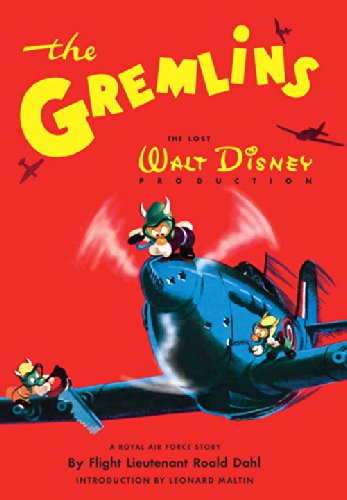
The Gremlins are thus the object of several mutations of which Dante and Spielberg’s film represents a particular stage of the persecution. The slang name for fate, they animate it, like Dahl, with an always reversible intention. The Gremlins carry the carnival within them: evil turns into good in Dahl’s story, but good turns into evil in Dante and Spielberg’s Gremlins. The cinematographic culture already had the ingredients for reversals, since the Christmas movie potentially contains the promise of a happy life, even of redemption, and a threat of death, oscillating from one pole to the other, from the best to the worst, according to the expectations and the sub-genres associated with them. The happiness shared in a world that should be better, that is improving, usually assures us the family Christmas film, being always the condition for the worst to happen.
Spielberg – it seems that only he can be credited with this gesture, if not who else? – goes one step further by shifting the Christmas theme to its carnivalesque reversal: the Father, in principle benevolent, instead of graciously giving eternal life to his children, graces them with a nightmarish chaos. The cosmic order is as if reversed. What was then for me only an intuition of a spectator who cares about his daughter’s leisure time – an intuition certainly well supported by numerous and corroborating clues as one says in court – found its confirmation when a movie lover friend tells me that the American cinematographic universe also include a genre called “Jewish Christmas movies.” In the hit parade of this sub-genre, Gremlins figures prominently.
I am reminded of the dialogue between Kate and Billy, which now takes on a more determined meaning. When Kate, who has seen her father lying in the fireplace with his neck broken – her father who wanted to surprise her with many gifts, but who only offered her the horrifying spectacle of his death as a surprise – confesses to Billy that she no longer celebrates Christmas since she has realized that Santa Claus does not exist, Billy retorts, stunned: “But you’re a Hindu, or what? “Hindu” is the point of exteriority from which Gremlins approaches Christmas. The detached look is exotic. The outsider alone perceives the carnival. So does Spielberg.
One suspects that Dahl’s reproach of Jews for lacking generosity toward non-Jews has also found an echo in the United States, where the production of films confounding Christmas is attributed to the Jewish stranglehold on Hollywood. Can we deny it? But Gremlins may be related to a much older genre than the Jewish Christmas movie, to those medieval Jesus stories (toldot yechou) in which the coming into the world of the Savior does not bode well. Those who know this from experience have only the harmless parody as a weapon. If Spielberg the Hindu thinks that he has been ungenerous to Christians, he can console himself with the fact that he is drawing on a long tradition where laughter prevails over death.
Hence my recommendation: watch Gremlins with your children, but not until they are of age.

